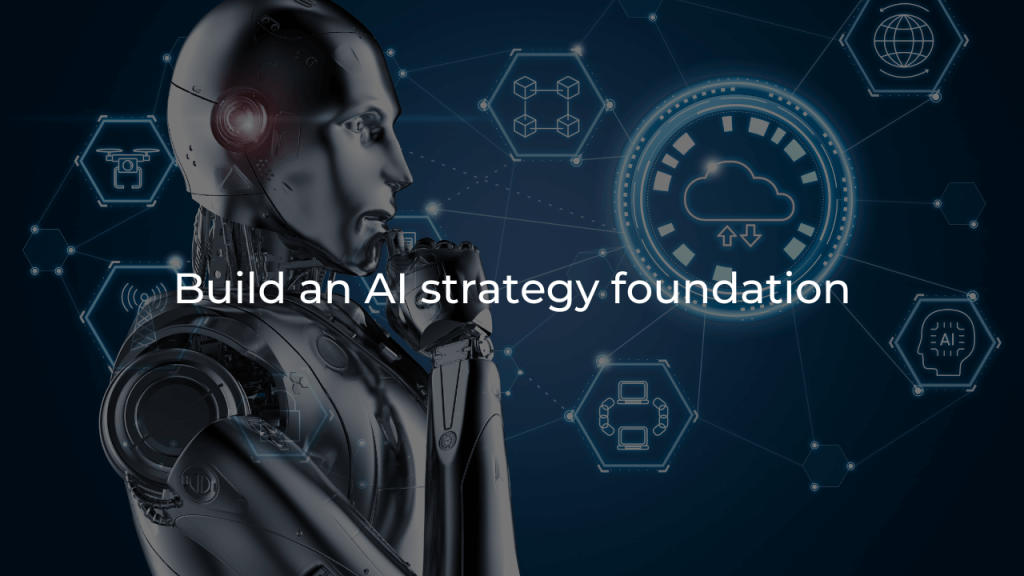4 Digital Transformations Initiatives to Kickstart Today
Most businesses struggle with and never fully complete their digital transformation (DX). According to research by Everest Group, 73% of businesses fail to generate any value from their digital transformation strategy. High failure rates are typically caused by inadequate preparation and employee resistance.
Rarely are large-scale digital transformation initiatives required as businesses often use short-term digital transformation initiatives that can benefit their customers and businesses immediately.
1. Seek out areas where automation is possible
A typical workday contains about 35% of dull and repetitive tasks. It is common for U.S. companies with more than 500 employees to experience annual financial losses of more than $1.47 million from repeated jobs.

Robotic process automation (RPA) is the use of computer programmes to carry out boring, routine operations more quickly than people. It has resulted in increases in compliance, accuracy, and productivity of 92, 90, and 86 percent, respectively.
Your organisation can start with an RPA success investigation by following these four steps:
- Needs analysis: Determine which processes, if any, are suitable candidates for RPA.
- Impact analysis: Determine if RPA will have a good or negative effect on the process.
- Feasibility analysis: Determine if your processes and/or RPA plan are in line with readily available resources through a feasibility study.
- Assessments of complexity: Measured by the number of applications involved, the frequency of human intervention, the number of steps necessary to do a task, etc.
2. Cloud Migration Readiness
The process of moving electronic assets from local servers to the cloud is known as cloud migration. Because of its many beneficial business effects, such as scalability, speed, collaboration, storage capacity, integration, cost savings, loss protection, and faster ROI, cloud storage is quickly overtaking physical data warehouses.

Some of the many benefits of cloud adoption include:
- Cost reduction
- Innovation
- Customer management
- IT simplification
- Agility
- Increased business results
All of these are unquestionably beneficial for the company, but firms must first determine how well-prepared they are to migrate.
Examining applications and data to see if they can be migrated to the cloud with little disruption to operational continuity is the process of determining cloud adoption readiness. A smooth migration is ensured by this technique.
An effective operational plan can be created to guarantee a smooth migration by conducting a cloud readiness assessment.
3. Build an AI strategy foundation
Any successful artificial intelligence (AI) strategy must have a strong foundation. To start, you’ll require:
Accessible, high-quality data. AI’s DNA is high-quality data. Access to reliable data is essential. You must follow all laws and ordinances that apply to your jurisdiction.

Analysis of data set for quality is based on:
- Accuracy
- Completeness
- Consistency
- Timeliness
- Uniqueness
- Validity
Obtaining cooperation from all management levels is a prerequisite for developing an AI strategy. Enterprise data verification and accessibility are essential. Once finished, it’s time to start the process of getting buy-in. Results from McKinsey’s worldwide AI study show that effective overall leadership is crucial for the application of AI to succeed. To convince the leadership of the benefits AI will have for the company, make your case succinctly.
4. User Experience (UX) Audit
In today’s information era, acquiring new customers is crucial. A well-designed UX can make a product more user-friendly and engaging, while a poor UX can make it difficult to use and frustrating. A UX Audit is the evaluation of a user’s experience with a product or service. The goal of a UX audit is to improve the usability, accessibility, and desirability of the product or service.

A UX audit can be conducted by anyone with an interest in improving user satisfaction with a product or service. However, it is often conducted by professionals who specialize in user experience design, such as interaction designers, user researchers, and accessibility experts.
A UX audit typically includes the following steps:
- Review of documentation: This step includes reviewing any documents that describe the product or service, such as requirements specifications, design documents, marketing materials, and user feedback.
- Interviews with stakeholders: This step includes interviews with people who are involved in designing and developing the product or service, including managers, engineers, designers, marketers, and customers. The goal of these interviews is to gather information about the goals of the product or service and how it is currently being used.
- Observation of users: This step includes observing users as they interact with the product or service. The goal of this step is to understand how users are currently using the product or service and identify any problems they encounter.
- Analysis of data: This step includes analysing data collected during interviews and observations to identify trends and issues
A UX audit can help identify user feedback that was not considered during the design process and make recommendations for improving the interface accordingly. Organizations often conduct usability tests early in the design process to capture user feedback, but this feedback is often not considered when finalizing the design.
Start your journey toward digital transformation now
Digital transformation fundamentally modifies business processes and customer value delivery. DX efforts are crucial since they have an impact on the business model and the entire organisation. Starting small can increase the likelihood of success even though studies show that most businesses fail to generate any value from their digital transformation strategy. Implementing DX initiatives requires patience because the process can take up to five years to complete.

Smaller and more immediate changes can boost confidence and have a favourable impact on business operations. Large DX victories can be attained by starting small.
To get started on your digital transformation, visit: https://myrepublic.net/sg/business/.



















